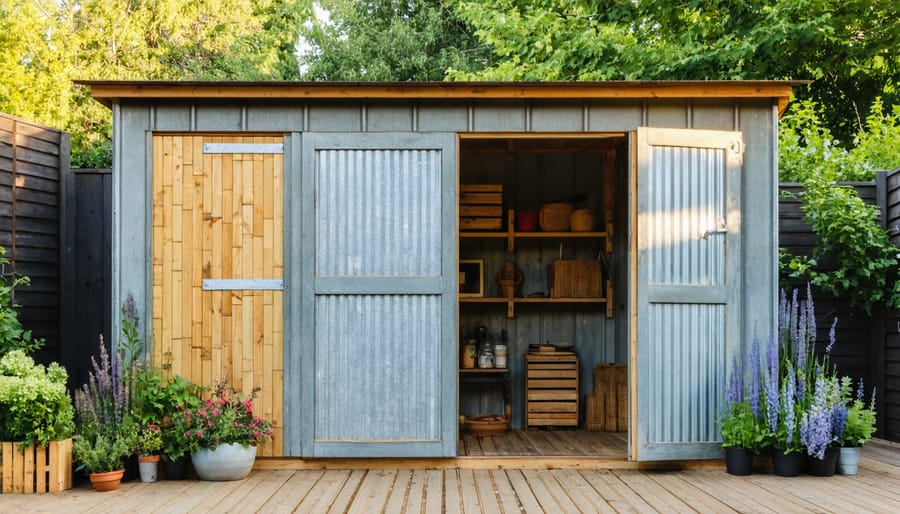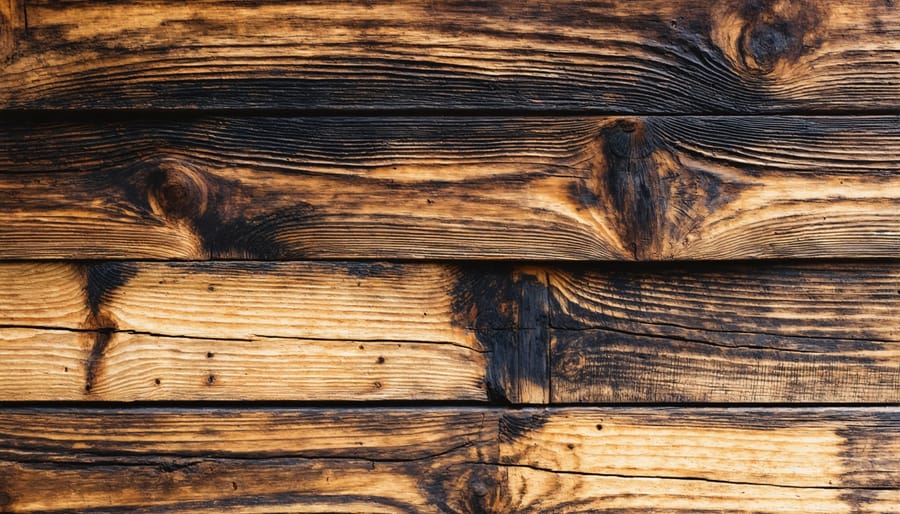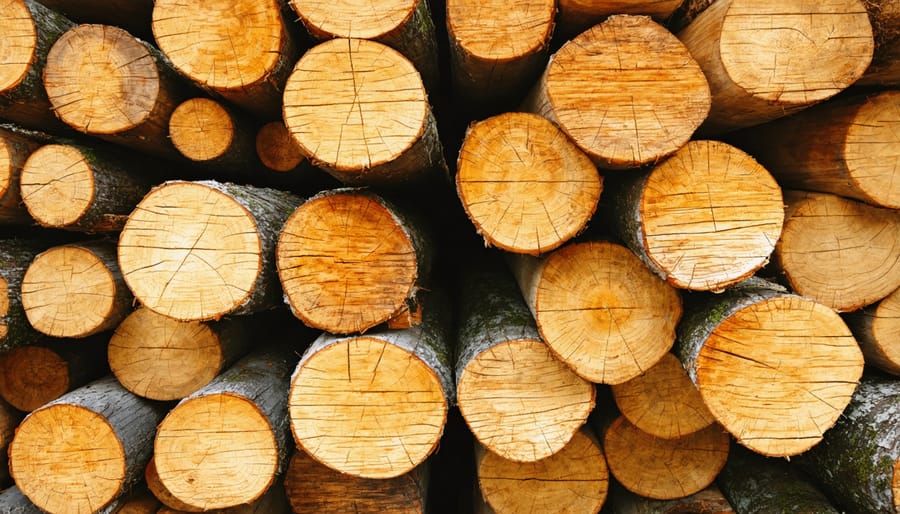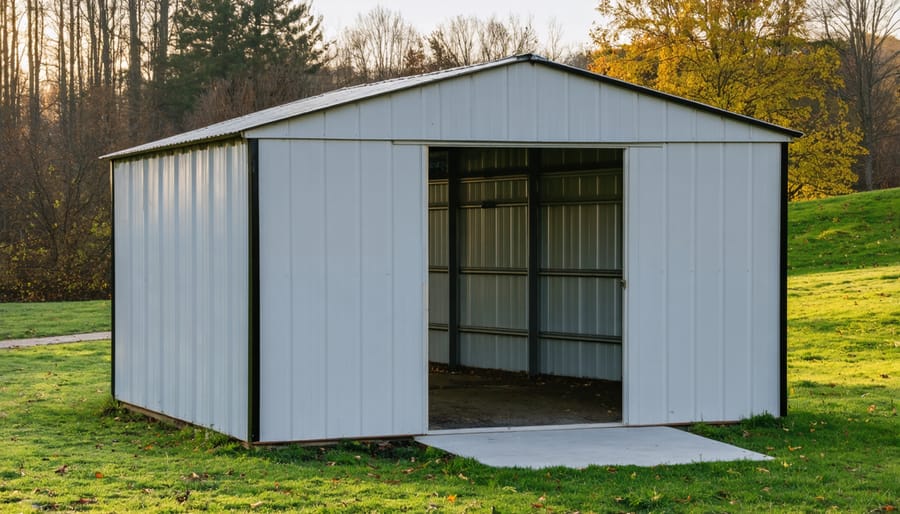Build Your Shed With These Materials That Pay You Back

Choose reclaimed wood from old barns or demolished structures for your shed project—you’ll reduce landfill waste while gaining unique character pieces that tell a story. This material diverts perfectly usable lumber from disposal sites and requires no additional tree harvesting, making it one of the most environmentally friendly options available.
Look for FSC-certified lumber at your local supplier when new wood is necessary. This certification guarantees the timber comes from responsibly managed forests where trees are replanted and ecosystems are protected. You’ll pay roughly 10-15% more than conventional lumber, but you’re supporting forest regeneration programs that benefit future generations.
Select recycled metal roofing or siding made from reclaimed steel or aluminum. These materials often contain 70-95% recycled content and last 40+ years with minimal maintenance, outlasting traditional materials by decades. The energy savings from recycling metal versus producing new material is substantial—up to 95% less energy consumption.
Consider bamboo for interior shelving or decorative elements. This fast-growing grass reaches maturity in just 3-5 years compared to hardwood’s 20-50 years, regenerates without replanting, and offers comparable strength to traditional wood. Sarah, a homeowner in Oregon, used bamboo shelving in her garden shed and reports it’s held up beautifully through three rainy seasons without warping or deterioration.
What Makes a Shed Material Truly Sustainable?
When you’re choosing materials for your shed, understanding what makes them truly sustainable helps you make choices that benefit both your property and the planet. Think of sustainability as a three-legged stool—all three aspects need to work together for the material to earn its eco-friendly badge.
The first pillar is **environmental impact during production and sourcing**. This covers how the material is harvested or manufactured. Does it deplete natural resources? How much energy goes into making it? Does production release harmful chemicals into the environment? For example, locally sourced reclaimed wood has minimal environmental impact since it’s already been processed once and doesn’t require long-distance shipping.
The second pillar focuses on **durability and longevity**. Here’s where sustainability gets practical for your wallet. A truly sustainable material doesn’t just check environmental boxes—it actually lasts. What good is an eco-friendly material if you’re replacing it every few years? This connects directly to quality shed features that stand the test of time. Materials like metal roofing or properly treated timber can last decades, reducing the need for frequent replacements and ultimately saving resources.
The third pillar addresses **end-of-life recyclability or biodegradability**. When your shed eventually reaches the end of its useful life, what happens to the materials? Can they be recycled, repurposed, or will they sit in a landfill for centuries? Metal components can often be recycled indefinitely, while untreated wood naturally biodegrades.
Use these three criteria as your sustainability checklist. A material that scores well across all three pillars—low environmental impact, impressive durability, and responsible disposal options—represents genuine sustainability rather than just greenwashing.

Reclaimed Wood: The Gold Standard for Eco-Friendly Sheds
Where to Find Quality Reclaimed Wood
Finding quality reclaimed wood for your shed project is easier than you might think! Start by exploring local salvage yards and architectural salvage shops – these treasure troves often stock beams, barn siding, and flooring pulled from old buildings. Many offer delivery and can help you calculate how much material you’ll need.
Barn demolition companies are another fantastic source. As old barns come down, the weathered wood becomes available at reasonable prices. You’ll often find beautifully aged planks with character that new lumber simply can’t match. Just be sure to inspect for rot, insect damage, or embedded nails before purchasing.
Online marketplaces like Facebook Marketplace, Craigslist, and specialized sites such as Barnwood Bricks connect you directly with sellers. One DIY enthusiast we spoke with found enough reclaimed oak for her entire shed for half the cost of new materials!
**Selection tips:** Look for wood that’s dry and structurally sound. Check the species – hardwoods like oak and maple hold up better outdoors. Ask about the wood’s history to avoid materials with lead paint or chemical treatments. Don’t hesitate to request samples before committing to larger quantities. With patience and careful inspection, you’ll discover sustainable materials that add authentic charm to your project.
Real Homeowner Success Story
Meet Jennifer from Portland, Oregon, who transformed her backyard shed dream into reality using reclaimed wood from a deconstructed 1940s barn. “I was worried about costs at first,” Jennifer admits, “but I found a local salvage yard selling weathered barn wood for about $3 per square foot—roughly 40% less than new premium lumber.”
Her 10×12 shed took three weekends to complete with her partner’s help. The reclaimed wood brought character you simply can’t buy new, with natural patina and unique grain patterns that became the shed’s standout feature. “Every board tells a story,” she says with a smile.
The total material cost came to around $1,800, and Jennifer estimates she saved approximately $600 compared to conventional materials. Beyond savings, she loves knowing her shed gave new life to materials destined for a landfill. “Five years later, it’s held up beautifully,” she reports. “My neighbors constantly ask about it, and I’ve inspired three friends to build with reclaimed materials too.” Her advice? Inspect boards carefully for structural integrity and budget extra time for cleaning and prep work.
What to Watch Out For
While sustainable materials offer wonderful benefits for your shed project, it’s important to go in with eyes wide open. Reclaimed wood requires careful inspection—check thoroughly for rot, insect damage, and structural weakness before purchasing. You’ll also want to know its treatment history, as older lumber may contain harmful chemicals that aren’t suitable for all applications. One homeowner shared how she discovered termite damage only after bringing beautiful barn wood home, resulting in wasted time and money.
Consistency can be another hurdle. Unlike new materials that come in standard sizes, reclaimed and recycled options often vary in dimensions, color, and condition. This means you might need extra pieces to account for unusable sections, and achieving a uniform look takes more planning. FSC-certified lumber addresses some of these concerns but typically costs 10-20% more than conventional wood. The key is budgeting extra time for sorting, cleaning, and possibly treating materials before installation—sustainable doesn’t always mean grab-and-go convenience.
FSC-Certified Wood: New Lumber Done Right
If you’re building a new shed and want to use fresh lumber responsibly, FSC-certified wood is your best friend. The Forest Stewardship Council (FSC) is an international organization that sets the gold standard for responsible forest management. When lumber carries the FSC label, you know it comes from forests managed with strict environmental, social, and economic standards—meaning trees are harvested sustainably, wildlife habitats are protected, and forest workers are treated fairly.
For shed builders, FSC-certified wood offers peace of mind without sacrificing quality. You’re getting the same structural integrity and workability as conventional lumber, but with the confidence that you’re not contributing to deforestation or habitat destruction. It’s especially great for framing, siding, and flooring—essentially any application where you’d use traditional dimensional lumber.
**How to identify FSC-certified products:** Look for the FSC logo on lumber tags, labels, or receipts at your local lumberyard or big-box store. The certification comes in three varieties: FSC 100% (all virgin wood from certified forests), FSC Mix (blend of certified and controlled sources), and FSC Recycled (reclaimed materials). Any of these options work well for shed construction.
**Real-world application:** Sarah from Oregon built her 10×12 garden shed entirely with FSC-certified pine and cedar. “I was worried certified lumber would be impossible to find or ridiculously expensive,” she shared, “but my local supplier had plenty in stock, and the price difference was only about 10-15% more. Knowing my shed didn’t contribute to clear-cutting made that small premium completely worth it.”
Most major home improvement retailers now stock FSC options—just ask at the lumber desk if you don’t see the labels immediately. This simple choice makes sustainable building accessible for everyone.

Recycled Metal and Steel: Built to Last Generations
When it comes to long-term sustainability, metal storage sheds made from recycled steel stand out as genuine champions. Here’s why they’re such a smart choice for eco-conscious homeowners.
**The Recycled Content Advantage**
Many metal sheds today contain 25-95% recycled steel content, with some manufacturers achieving nearly 100% recycled materials. This is remarkable when you consider that steel can be recycled indefinitely without losing its structural integrity. Every time you choose a recycled metal shed, you’re directly reducing mining demands and keeping tons of material out of landfills.
**Energy Savings That Matter**
The production process tells an impressive story. Manufacturing steel from recycled materials uses approximately 75% less energy compared to creating new steel from raw ore. That’s a substantial reduction in carbon footprint before your shed even arrives at your property. For homeowners watching both their environmental impact and energy costs, this makes practical sense.
**Built for the Long Haul**
Here’s where durability meets sustainability beautifully. A well-maintained metal shed can easily last 20-30 years or more, and when its useful life eventually ends, the entire structure can be recycled again. Compare this to sheds made from non-recyclable materials that end up in landfills, and the environmental benefit becomes crystal clear.
One homeowner in Colorado shared how their recycled steel shed withstood fifteen winters of heavy snow without any structural issues. “I bought it knowing it was eco-friendly, but honestly, the durability has been the real win,” they noted.
**Practical Considerations**
While recycled metal sheds cost slightly more upfront than basic wooden alternatives, the longevity and near-zero maintenance requirements typically offset this difference within a few years. They resist pests, won’t rot, and require no chemical treatments—another sustainability bonus that keeps harmful substances out of your yard and local watershed.
For DIY enthusiasts, assembly is straightforward with pre-drilled components, making installation a manageable weekend project.

Bamboo and Engineered Wood Products: Modern Alternatives
If you’re looking for cutting-edge sustainable materials that perform beautifully in shed construction, bamboo and engineered wood products deserve your attention. These modern alternatives are transforming how we think about eco-friendly building.
Bamboo might seem like an unconventional choice, but it’s actually a superstar in sustainability. This fast-growing grass (yes, grass!) reaches maturity in just 3-5 years compared to traditional lumber’s 20-40 years. Bamboo composites—engineered products made by bonding bamboo fibers together—create incredibly strong panels perfect for shed flooring, wall cladding, and even structural elements. One homeowner in Oregon shared that her bamboo composite shed floor has withstood five rainy seasons without warping, all while looking fantastic.
Engineered wood products like OSB (oriented strand board) and plywood offer another brilliant solution. Modern OSB is manufactured from small, fast-growing trees and wood waste that would otherwise be discarded. Instead of cutting down old-growth forests, manufacturers use wood chips and strands pressed together with adhesives to create sturdy, reliable sheets. This approach maximizes every bit of harvested wood—nothing goes to waste.
For shed builders, these materials solve real problems. Bamboo composites resist moisture better than traditional wood, making them ideal for damp climates. OSB provides consistent quality without knots or weak spots, giving you predictable performance at a reasonable price point.
When shopping, look for bamboo products certified by organizations like the Forest Stewardship Council and OSB made with low-VOC adhesives. You’ll get durability, sustainability, and peace of mind knowing your shed contributes to healthier forests and a healthier planet.
Making Your Existing Shed More Sustainable
If you already own a shed, there’s great news—you don’t need to start from scratch to make it more sustainable! With a few thoughtful upgrades and maintenance practices, you can significantly reduce your existing shed’s environmental impact while extending its lifespan.
Start with eco-friendly shed maintenance by choosing natural, non-toxic treatments for wood protection. Linseed oil, beeswax finishes, and plant-based stains offer excellent weather resistance without harmful chemicals. These options protect your shed while keeping toxins out of your soil and groundwater—a win-win for your property and the planet.
When repairs are needed, opt for sustainable materials that match our earlier examples. Replace damaged boards with reclaimed wood or FSC-certified lumber rather than conventional options. For metal components like hinges or roofing patches, seek out recycled metal products. Sarah, a homeowner from Oregon, shared: “I replaced my rotting shed floor with reclaimed barn wood. It cost about the same as new lumber but added so much character while being environmentally responsible.”
Extend your shed’s life by addressing small issues promptly—fixing leaks, repainting with eco-friendly paints, and ensuring proper ventilation to prevent moisture damage. When you organize your shed efficiently, you’ll reduce clutter and allow better airflow, preventing rot and extending structural integrity.
Consider adding sustainable features like solar-powered lighting or a green roof with drought-resistant plants. These upgrades transform your existing shed into an eco-friendly asset that serves you well for decades to come.
Choosing sustainable materials for your shed isn’t just good for the planet—it’s a smart investment in a structure that’ll serve you well for years to come. Whether you opt for the rustic charm of reclaimed wood, the reliability of FSC-certified lumber, the durability of recycled metal, or the innovative appeal of bamboo, you’re making a choice that creates real value. These materials offer strength and longevity while reducing your environmental footprint, which feels pretty great when you step back to admire your finished project.
The beauty of sustainable building is that it doesn’t require perfection. Starting with just one eco-friendly material makes a difference. Maybe you’ll choose recycled metal roofing for its incredible lifespan, or perhaps reclaimed wood siding speaks to your style. Whatever resonates with you, take that first step.
Ready to bring your sustainable shed vision to life? Consider which of these materials aligns best with your budget, aesthetic preferences, and local availability. Your shed can be both functional and environmentally responsible—and that’s something worth building toward. What sustainable material will you choose for your next project?

